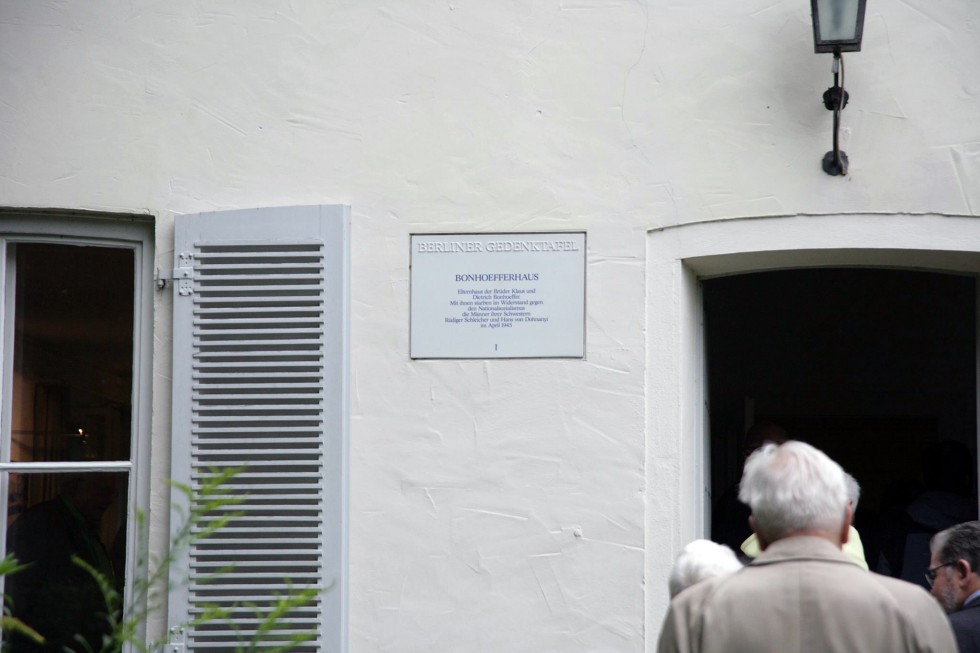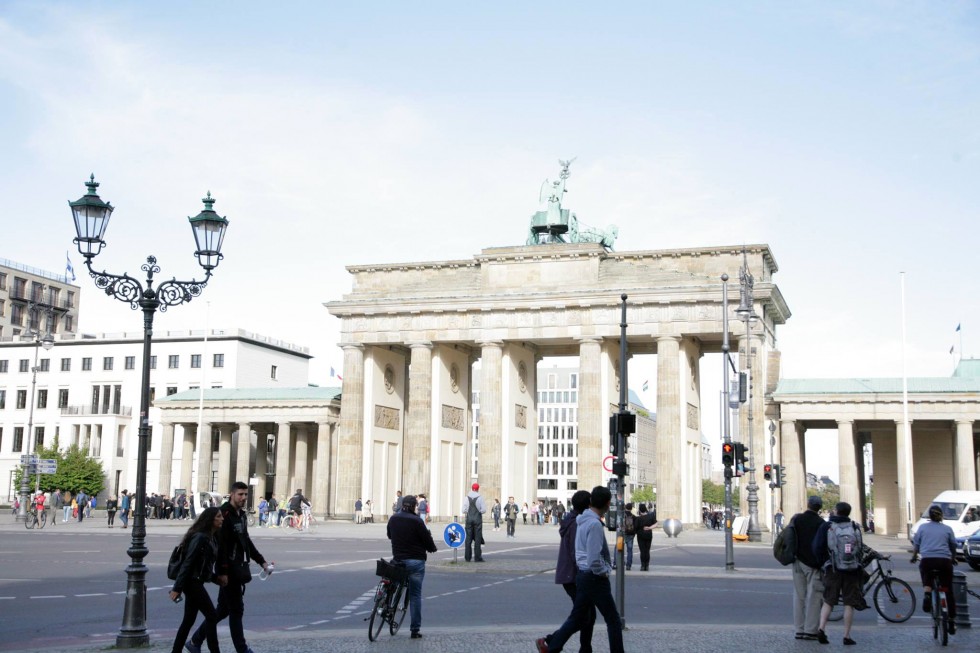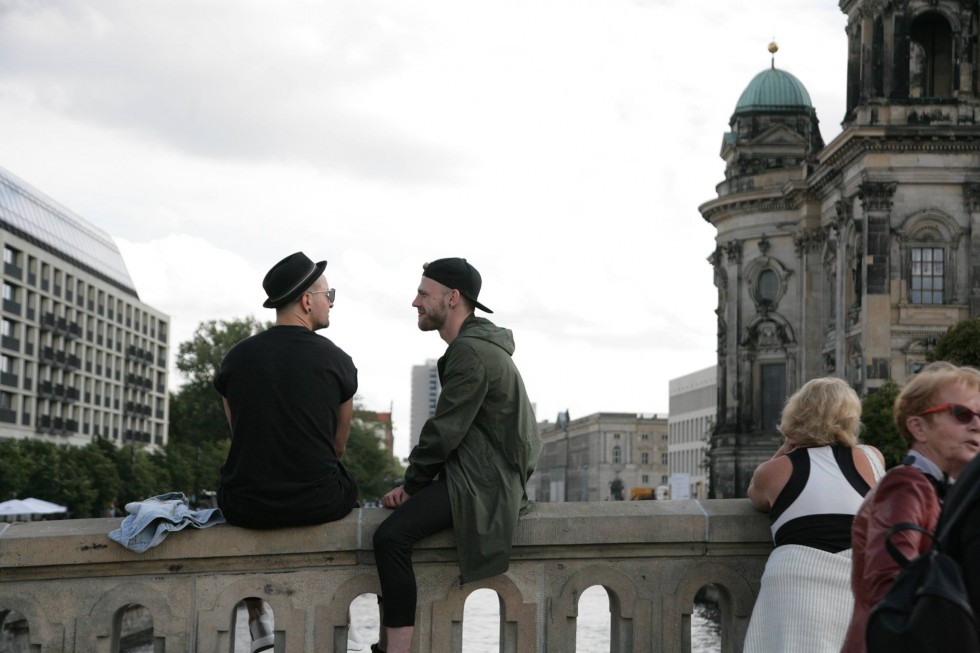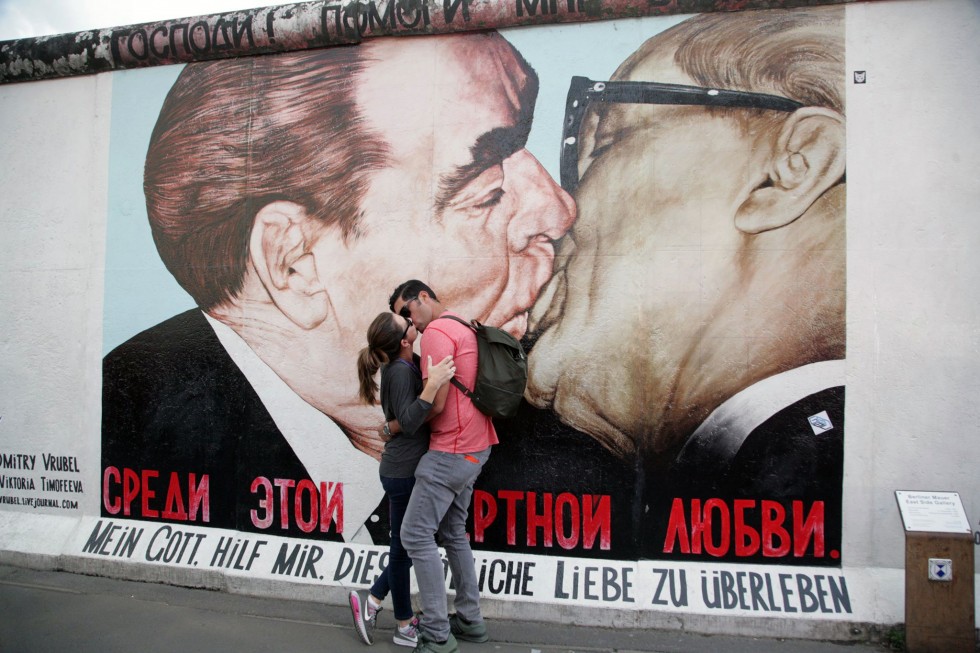Four Days in the Company of Dietrich Bonhoeffer
Each year in the first half of September, nearly a hundred well-respected Germans leave their comfortable homes, trusting their wives, dogs and grandchildren to the care of other family members, and set out to the wilds of Thuringia. This happens year after year – but not this year. This year, due to the 500th anniversary of the Protestant Reformation, the gentlemen had to trade the fresh morning air filled with the scent of pine cones for the atmosphere of the big city, in Berlin.1
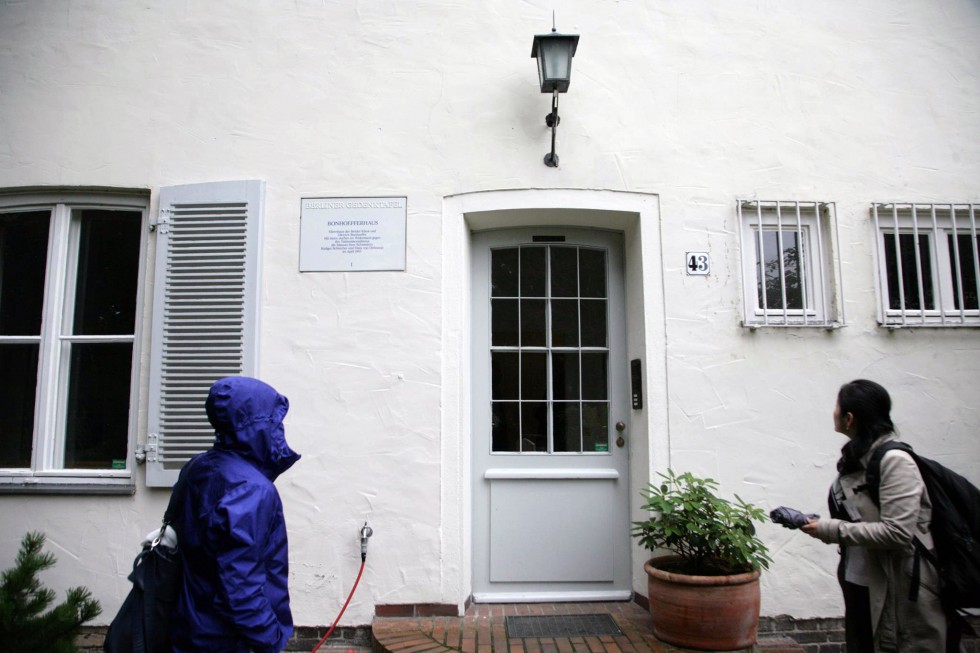
The House where Dietrich Bonhoeffer grew up
These aren’t tourists or lovers of active outdoor sports – although who knows? It is something else, however, that brings them together; it’s the memory of a remarkable person – a pastor, scholar, conspiracy theorist, poet and true Christian – Dietrich Bonhoeffer. These people are members of the International Bonhoeffer Society, which for more than 50 years has borne the name of the remarkable man. The Society works to preserve the heritage of the theologian; each year, leading Bonhoeffer scholars come together to celebrate his life’s creativity. Leading scholars, and this year me, who hasn’t yet – I hope only “yet” – earned a Bachelor of Theology degree.
How did it happen?
In the life of every student there comes a moment when he or she has to choose the topic of his thesis. This is only half of the matter. Then there comes a moment when you understand that you can no longer wait and you have to do something right away. That moment came upon me at 1 in the morning; I couldn’t sleep. And so: night, my room, me…and Bonhoeffer. I looked over scans of various works on Bonhoeffer and one of them grabbed my interest to such a degree that by 2am I was scanning Google, hoping very much to find the entire text. But, instead of finding the entire text, I ended up finding the email of the author, and immediately wrote a note to her.
Maybe the night was dark or I hadn’t had enough sleep or I really, really wanted to find that whole text…but whatever it was, something caused me to write that note not only with a request but also with a promise. I told Doctor Schliesser that I study at SFI and am trying to write my thesis on Bonhoeffer. I asked her to send me the text because of my personal need and proposed to her that I translate some work of hers into Russian for publication in our Institute’s periodical.
And in the morning it all happened: she answered me, sent me the texts, agreed to the translation and invited me to the conference.
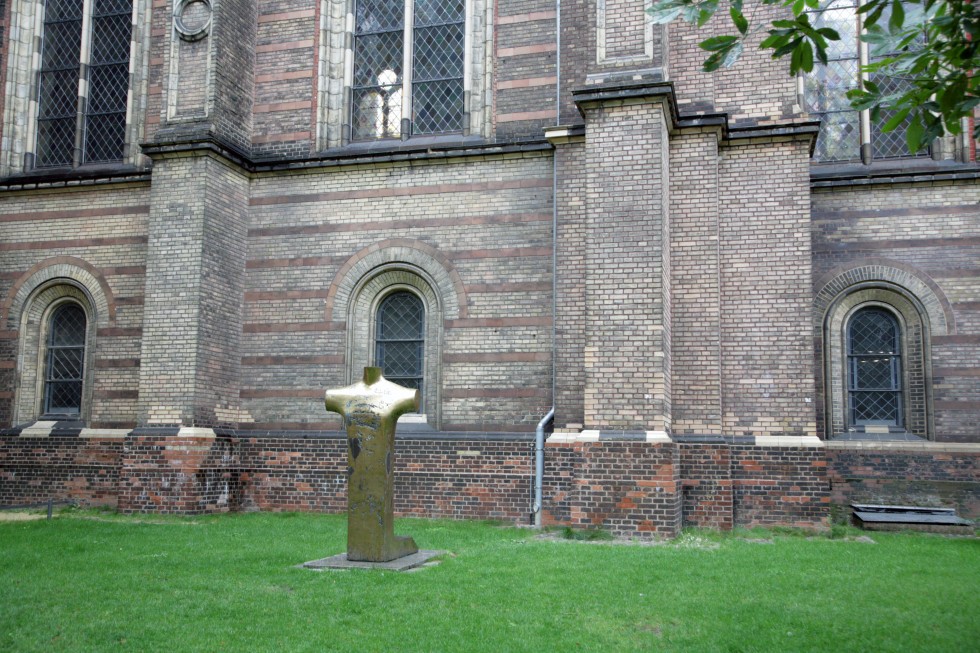
The Church of Zion, where Bonhoeffer served in the early 1930s
Then the inevitably boring procedure of making a visa (the German Consulate gave me a visa for four days only – but it was multi-entry!) and then here I am, sitting here in Germany in a certain state of shock. To my left is sitting Wolf Kroetke (a couple of his works were in my initial list of literature), a little bit in front of me are two white-haired elders, avidly speaking with each other about something or other. One of them really looks like the storybook version of Santa Claus, but turns out to be the author of a biography of Bonhoeffer, Doctor Ferdinand Schlingensiepen.
Doctor Schliesser, who was directly guilty for my participation in this conference, I couldn’t immediately locate; it was difficult to recognize a doctor of theology and mother of three in this slim girl with a tidy pierced nose. Christina (as she asked me to call her) had, on the previous day, informed a closed meeting of the Society of the arrival of their guest from Moscow, so I didn’t have to try too hard to figure out how to open each conversation. Most of my conversations began with others’ amazement that I could write my thesis for an Orthodox theological institute on a Protestant Theologian.
On Cheap Faith, Attractive Obedience and the Grandson of the Reichskanzler
But moving on to the conference itself, the program of which turned out to be jam-packed with interesting tidbits: there were five papers given as well as theses presentations, the Annual General Meeting of the Society and excursions to places of interesting in Berlin, relating to Bonhoeffer’s life.
Amongst the papers, I want particularly to mention that of Doctor Wildfried Harle (on cheap vs. costly grace), and that of Doctor Schlingensiepen, who I already mentioned above (on the latest and next-to-latest on Luther and Bonhoeffer). It was with Doctor Schlingensiepen that I conversed most often and deeply, telling him about my thesis topic…though wait, actually in the beginning it was to a pastor Heiner Zuesselbek, who I ended up speaking with twice in the lift. The pastor put in a good word for me, and Doctor Schlingensiepen promised to send me a copy of his biography of Bonhoeffer, as well as a couple of his papers. My theme turned out to be of interest to him and he wrote it down, promising to “think more about it in his free time.”
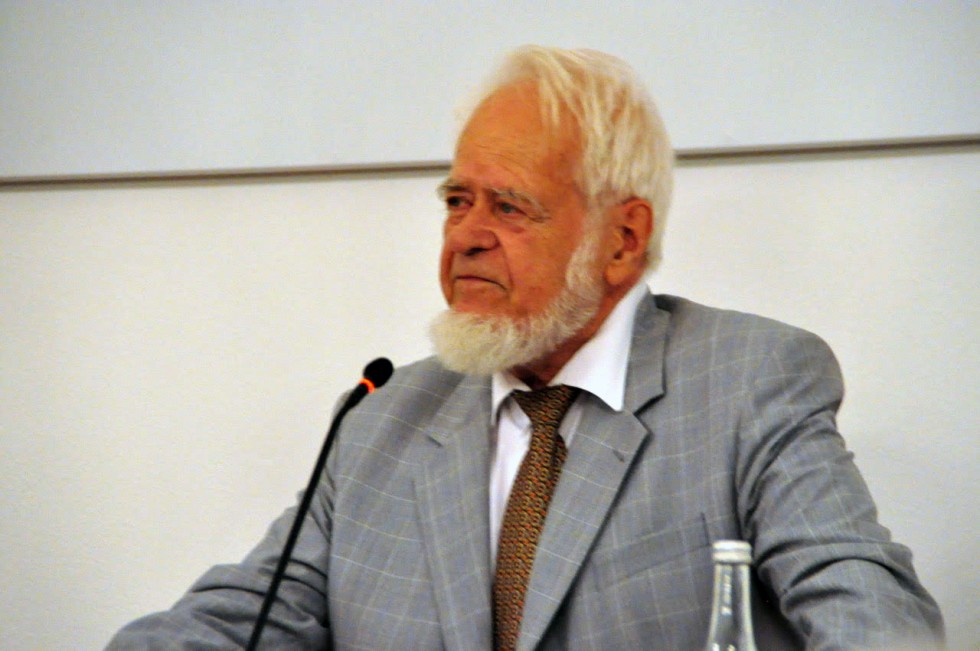
Doctor Ferdinand Schlingensiepen
I should mention something else about Doctor Schlingensiepen – he was friends with Eberhard Bethge, the friend and biographer of Bonhoeffer, and publisher of his works. As a child, through his father he participated – insofar as is possible for an eight-year-old child – in seminars which Bonhoeffer himself lead in Finkenwalde. And in addition to everything else, he turns out to be the grandson of Reichskantzler Georg Michaelis.
Listening to paper presentations wasn’t mandatory for conference attendance – it was possible to swap the presentations for a three hour city tour, but I resisted the temptation and didn’t regret my decision one bit. There were three paper presentations, with a single hour dedicated to each one. For the first 40 minutes or so the student presented his work, and for the remaining time sat down with pen, paper (and humility!) to listen to commentary and critique from others. The gathering of respected scholars then made comments, asked questions and gave advice about where to proceed and to whom to turn for further development of the topic. I especially enjoyed the paper given on the prerequisites for obedience (on Sanctorum communio). This was also the presentation that drew the greatest number of questions, including one on “how to once again make obedience attractive and even ‘more sexy’”. Unfortunately, we didn’t get to the bottom of this one.
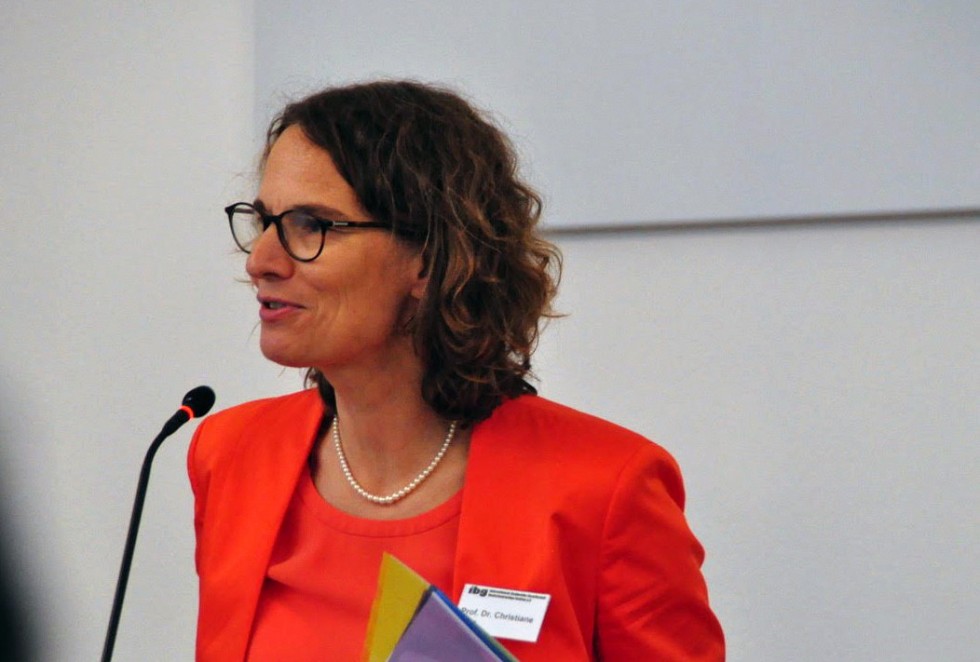
Chairman of the German Section of the International Bonhoeffer Society, Professor Christiana Tietz
In the steps of Bonhoeffer
The second-last day of the conference began with a bus tour of the Bonhoeffer sites of Berlin. We saw Bonhoeffer’s parents’ house, the school where he studied, Grunewald Train Station (known for the sad fact that people were sent to concentration camps from here), Bonhoeffer’s own house (from a distance) and the Church of Zion, where he served as pastor. We spent the most time at the first and last of these locations.
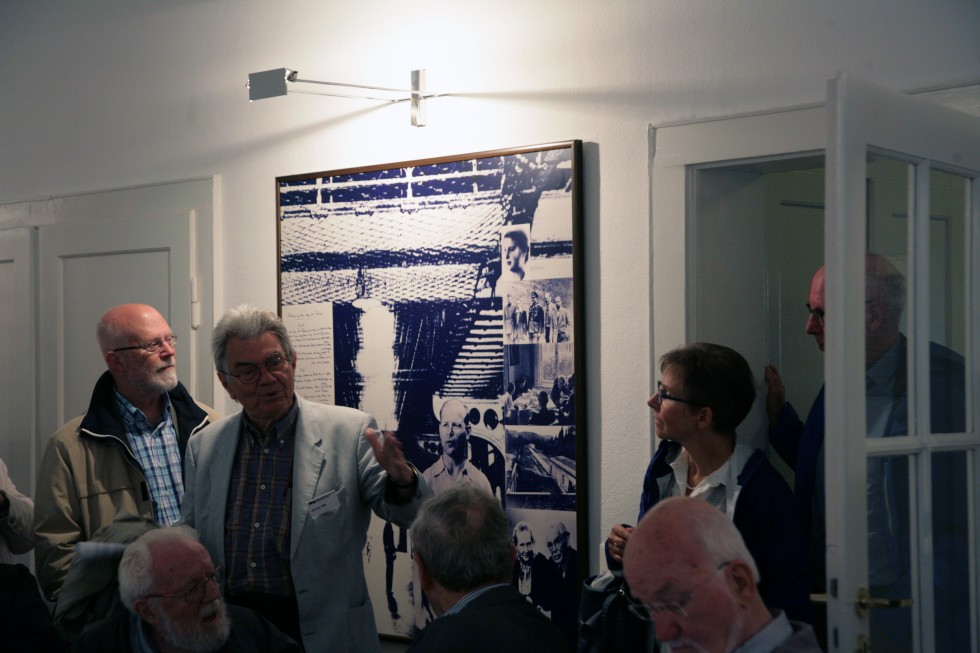
The museum in the house where Bonhoeffer grew up
The house of Bonhoeffer’s parents has for many years been a museum or – as the housekeeper Gottfried Bretzger told us – a place for meetings and remembrance. As for the secondary school, it is noteworthy that one of Bonhoeffer’s sisters, Christel, was granted permission to study there, though at the time it was a school only for boys. It was while she was at this school that Christel met her future husband, Hans von Dohnanyi, who like Dietrich Bonhoeffer, was executed in April, 1945.
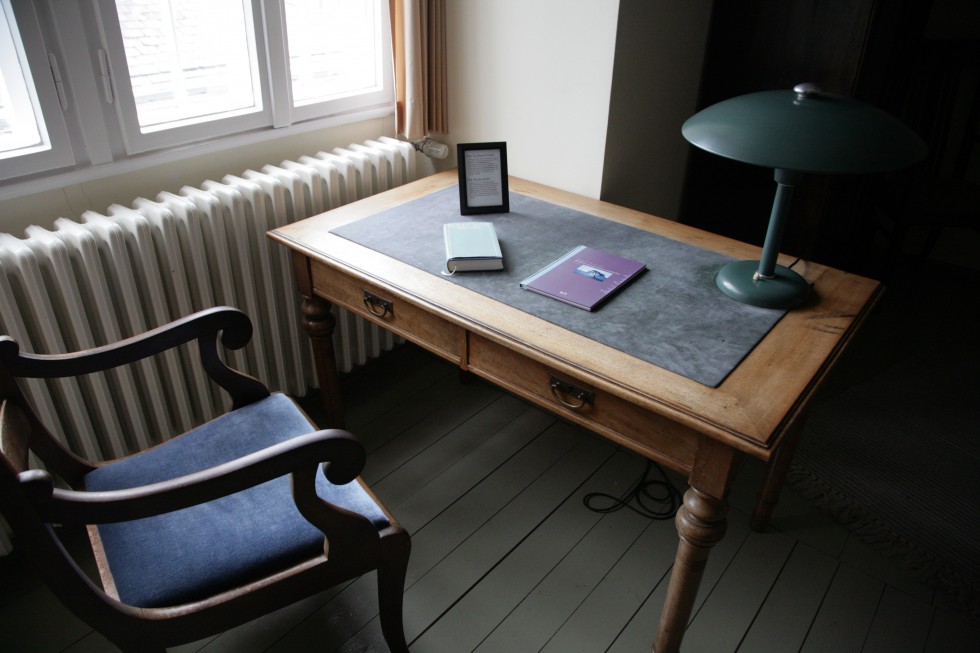
Bonhoeffer’s desk
We did not drive up to the house where Bonhoeffer himself lived because the tiny street is not made for large vehicles, and a walk by foot would have meant quite a bit of extra time and energy, as well as keeping those who did not go on the tour waiting an extra half an hour for their lunch. To the question of whether it is possible in principle to take a house tour, our guide answered in the negative, saying that the house is now just typical real estate and currently occupied by people who have no relation to Bonhoeffer whatsoever. Furthermore, our tour guide said, one of the current inhabitants is a tax inspector, and it is better to avoid such people, in his opinion. The Church of Zion was our final destination; it was here that in the early 1930’s Bonhoeffer taught and prepared people for confirmation.
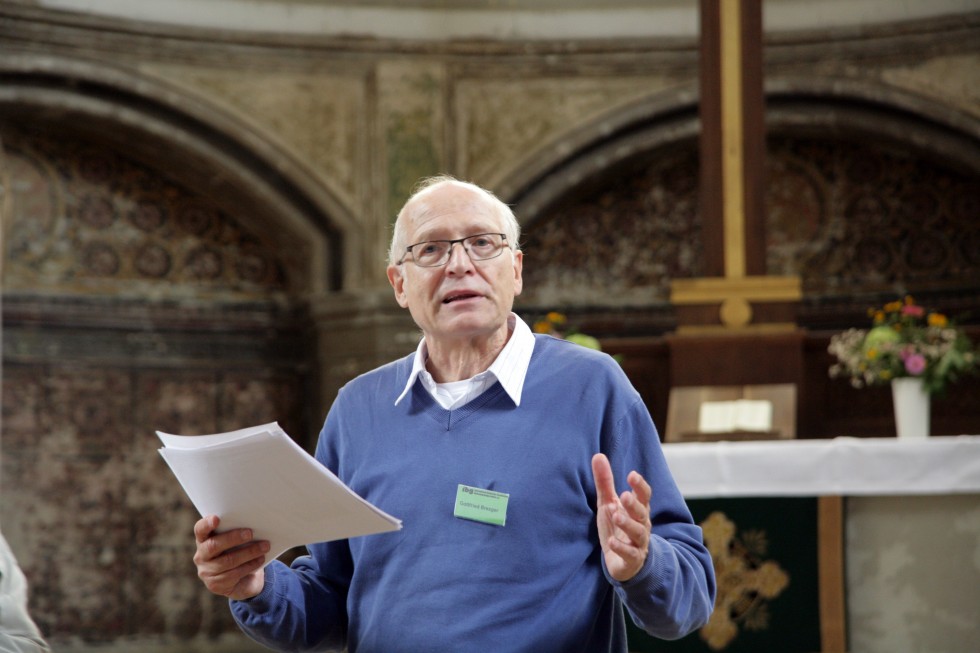
Gottfried Bretzner, Housekeeper at the Bonhoeffer Museum
After the official portion of our program, at which we congratulated one of the scholars on his birthday, I was speaking to a woman whose name was not only difficult to pronounce but even to write; she was there with her aunt, who turned out to be none other than the cousin of Bonhoeffer’s wife, Maria von Wedemeyer.
A Lone Vermeer vs Brezhnev and Honecker
I should mention that my time in Germany was not limited only to that single conference. Insofar as they gave me a multiple-entry visa, albeit for a period of only four days, I decided to fill these days with just as much as I was able. If you recall, the conference lasted from Thursday at 18:30 until Sunday at 11:30. I had the program of the conference on hand and air tickets arriving Thursday at 9am and leaving at 11pm Sunday night: at which museums should I spend the rest of my time, when there is so little of “the rest of my time” to spend?
Most city guides suggest a fairly standard set of attractions, including the Reichstag, the Brandenburg Gate, Unter den Linden, the East Side Gallery, the Nikolakirche and Charlottenburg. In terms of museums, Museum Island – where there are 5 museums right at the center of Berlin – is considered the best choice. Of course, I wanted to do all of this, but knew this was hardly possible during the course of less than two whole days. In addition, I really wanted to see the Berlin Picture Gallery and the Kupferstichkabinett, which are both somewhat far from the other usual tourist locations.
Happily, I decided to begin with the two last, but not least, points on the list above, and then just see how things developed. Thanks to their location along my ongoing route – I was walking from Alexanderplatz – I was also able to see the Rathaus, Nikolakirche and the Holocaust Memorial, have a small walk in the famous Tiergarten Park, and then, with a little loop on the way back, walk by the Reichstag and Brandenburg Gate.
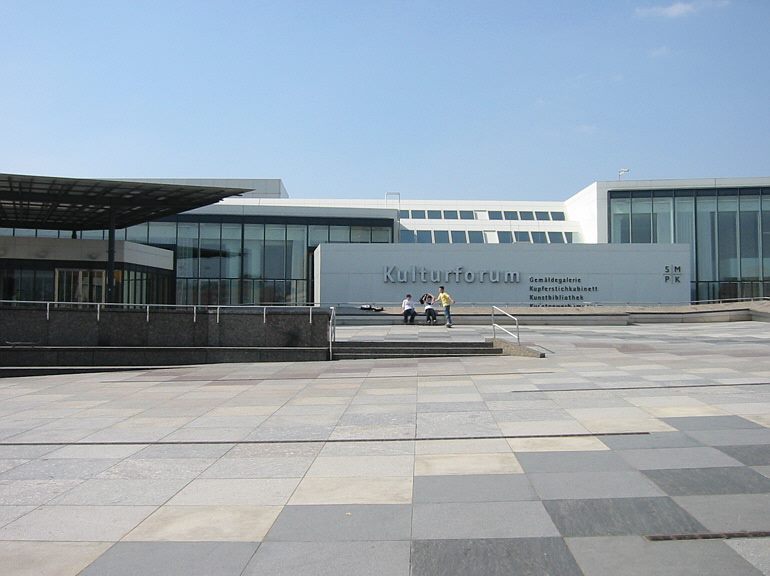
The Berlin Picture Gallery
But what of the museums? The Picture Gallery absolutely amazes. It is jam-packed with a plethora of masterpieces and there are barely any visitors at all. Of course, there is something amazing about being able to take your time with the pictures, not being pushed along by a crowd of Chinese tourists, as so often happens, for instance, at the Hermitage in St. Petersburg. But canvases of the likes of Durer and Cranach, Bruegel and Vermeer (yes, there was a Vermeer here!), Memling and Rogier, Botticelli, Raphael, Rembrandt and Rubens… aren’t these worth more than a couple dozen visitors a day? It is to this museum, rather than to Museum Island, that it is worth paying a visit in the first instance.
As for the Kupferstichkabinett, I was actually slightly disappointed at first. The collection is described as more that 1.5 thousand masterpieces such as Durer, Cranach, Rembrandt and others, but in reality I found only a couple such works on display. The lion’s share of the exhibition was comprised of more modern works, which some people might prefer, but I was expecting something different.
But the disappointment wasn’t of long duration. I don’t know what prompted me, but I asked one of the wardens where all those advertised works were: where was Durer’s “Melancholia”, or his “Knight, Death and the Devil”? “They are all in the reading hall. Over there,” he answered in a completely impassive voice, pointing to an unimpressive and barely noticeable glass door.
And surely enough, in the reading hall you not only can look at books nearly as old and Johann Guttenberg himself, but also pictures and engravings of the ancient masters. Anyone at all can do this just by signing up for a card, which took me all of 5 minutes, three of which I used to run to the coat room for my passport. And so, I, having signed up, ordered up some works of Durer and sat and waited. In the course of three minutes, they “rolled out” – I kid you not – the works to me, gave me a quick introductory course and a magnifying glass, and left me to my reveries. Then I looked at Raphaels (preferring him to Rembrandt since I’d had more chance on previous occasions to view the works of Rembrandt)… and then the reading hall closed.

Albrecht Durer “Melancholia”, an engraving on copper created in 1514
It’s understandable that after such amazing impressions I was more reserved in my view of the 5 museums on Museum Island, though I found plenty to look at there, as well. As for me, I specifically noted Donatello’s Pieta and the mosaics of Ravenna at the Bode Museum, and the Ishtar Altarpiece in the Pergamon Museum, and the Hall of the Impressionists at the Old Picture Gallery.
I should also admit that I couldn’t resist the temptation to walk across nearly the whole city to see the remains of the Berlin Wall with its infamous graffiti – one of the most famous examples of which is probably “the kiss of death” between Brezhnev and Honecker. I can tell you honestly that my walk in Berlin, going from west to east and seeing what is still the great contrast between them, moved me much more than the Wall itself.
I returned to the western portion of the city, said “goodbye” to it at the Brandenburg Gate and from Friedrichshafen Train Station, and headed to the Airport. There were barely 2 hours left until the expiration of my visa.
1 This year, due to the 500th anniversary of the Reformation, all the hotel rooms near Eisenach in Thuringia, where the annual Bonhoeffer conference is general held, are sold out.
